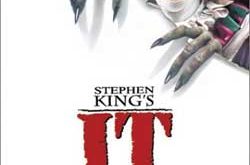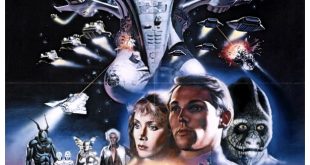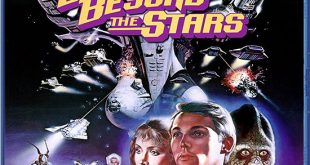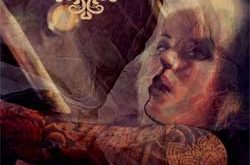 The New Black – edited by Richard Thomas
The New Black – edited by Richard Thomas
Dark House Press, 2014
Sometimes I forget that there are big-time, majors in the world of book publishing, because it seems like everything good is coming out of the indies. Between the titles coming out of established indies like Lazy Fascist Press, Sinister Grin Press, and Samhain Publishing (just to name a few), and the high-quality work coming from “new guys” like Broken River Books, Bizarro Pulp Press, and the like, you have enough quality fiction to give you years of great reading.
Well, it’s time to add another name to that list. With their first release, The New Black, Dark House Press (an imprint of Curbside Splendor helmed by Richard Thomas) has come on to the scene swinging.
What we’ve got here is a collection of dark and twisted stories from a variety of authors, some familiar names, others up and coming. While the topics and themes within the tales are as various as the voices telling them, the common thread each shares is a connection to the neo-noir. But what, exactly, does this seemingly catch-all label mean? Leave it to Laird Barron (two time Shirley Jackson award winner, author of The Croning) to explain the idea of “neo-noir” in his foreword: “(It is) a snarling ball of tragedy, absurdity, and menace. It’s a southern gothic, and it’s a bloody mystery set in the wilderness, or a Peckinpah-worthy massacre among the stars.
Anything can happen, and it can happen to anyone. …All it takes is a misstep, an honest miscalculation, the injustice of being in the wrong place at the right time.” And so, the twenty stories that follow are all derivations of that theme, each told in their own original way.
The collection starts strong with a story by Stephen Graham Jones (author of Demon Theory, The Last Final Girl, and The Gospel of Z, among many, many others) called “Father, Son, Holy Rabbit.” It is a depressing, heartfelt story of a father and son lost in the wintery wilderness doing what they can to stay alive. It’s in the same vein as McCarthy’s The Road, but minus the post-apocalyptic setting. A great start to the collection, as it is (as always) great writing by Jones that really sets the tone for the path ahead. Another early highlight is Lindsay Hunter’s “That Baby,” a horrifying tale about a mother and her newborn boy that seems to be a little different than the other kids. “The Truth and All Its Ugly,” by Kyle Minor, tells the slightly-futuristic tale of a broken family in a very “Monkey’s Paw” kind of way. What a great way to start a collection.
In fact, there are many great stories throughout the pages of The New Black, so many that to name them all would be practically reciting the table of contents.
Some of the standouts include “Dial Tone,” by Benjamin Percy, “The Etiquette of Homicide,” by Tara Laskowski, “Dredge,” by Matt Bell, and “Children Are the Only Ones Who Blush,” by Joe Meno (an author whom I’ve been a fan of for many years, and one who might be surprised to see his name mentioned in a review on a site called HorrorNews). But after all is said and done, there are two stories that stand out above all others in this collection, two that make The New Black worth owning, and they are (in my opinion) perfectly placed near the very beginning and the very end of the book, respectively.
Brian Evenson (who is probably better known for his novels Last Days and The Open Curtain, and who co-wrote the novel The Lords of Salem with Rob Zombie) closes out the book with his short story, “Windeye,” one that is sure to leave you with chills. In a House of Leaves-ish, yet wholly original, kind of way, Evenson spins the tale of a young brother and sister who discover a mysterious window on the outside of their house that doesn’t seem to have a corresponding inside. At first a mere curiosity, trouble starts when the two decide to try and figure out where the window goes. It’s a haunting story that will stick with you long after you set the book down, and the perfect closer to a great collection.
The strongest story in the entire book comes right at the beginning, just a few pages in, and is from an author whose name I have heard around, but never had a chance to read. Paul Tremblay’s story, “It’s Against the Law to Feed the Ducks,” gave me goosebumps, the first story I can remember to do so. And yet, it starts so simple. A family of four (mom, dad, their four year old son, and their infant daughter) embark on a family vacation to a rented cottage in the middle of nowhere.
They go to the beach, and they go swimming, and then something happens. Not directly to them, but something that the children cannot comprehend, something that worries the parents. And then we watch, helplessly, as a tight-knit family that is supposed to be enjoying each other’s company instead attempts to keep their cool and make plans for a forever-changed future. Tremblay’s writing nearly chokes you with tension and suspense, at the same time giving brief moments of release as we recognize our own family within his characters. This is my first exposure to Tremblay’s writing (author of the novel Swallowing A Donkey’s Eye and co-author, with Stephen Graham Jones, of the upcoming Floating Boy and the Girl Who Couldn’t Fly), but I cannot wait to read more. And that is what makes a collection like this so great.
With The New Black, Richard Thomas and Dark House Press are establishing themselves as a press that is aiming to put out quality dark, literary fiction.
The design, done by Alban Fisher, looks sharp, and the story-specific illustrations by L.A. Spooner are yet another “extra” that makes this a memorable release. As with any collection, some stories are, of course, stronger than others, and after such a fast and brutally powerful start, the collection does slow down a bit at points near the middle, but then picks back up for a strong finish. Hardcore fans will note that each story is a reprint from an earlier publication, but the beauty of a collection like this is that you are bound to find a new author with whom you were not previously familiar and whose books will quickly end up on your Amazon wish list. I added a handful myself. The New Black represents a powerful start from a new publisher, and if it’s any indication of what they have in store, they are one to keep an eye on.
Book Review: The New Black – Editor Richard Thomas
 Horror News | HNN Official Site | Horror Movies,Trailers, Reviews
Horror News | HNN Official Site | Horror Movies,Trailers, Reviews




